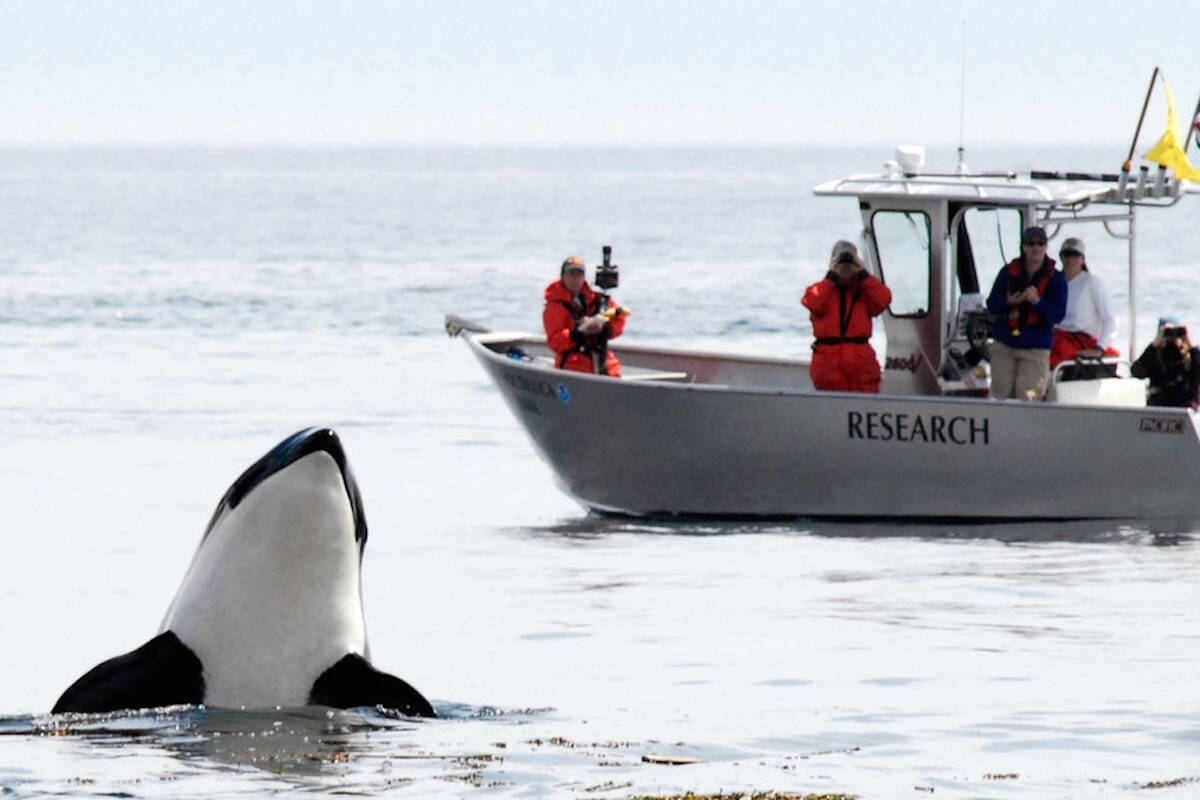Scarcity of prey? Pollution contaminating the water? Noise and other disturbances from boats? A new unknown health threat?
It’s still unclear if it’s a combination of those compounding impacts or if one single factor is causing an uncertain future for southern resident killer whales.
But what is clear, according to the results of a recent five-year review, is the whales need to remain an endangered species, as southern residents continue to face a high risk of extinction.
The U.S. North Oceanic and Atmospheric Administration fisheries department review – mandated under that country’s Endangered Species Act – found that while many orcas are doing well, southern residents are not.
Whale tracking, listening to orca vocalizations and collecting fecal and leftover prey samples were used to create a comprehensive story of the research and recovery actions that have taken place in the last five years.
Southern resident killer whales, a group currently totalling 73 animals, were first listed as endangered in 2005. Their main threats are prey availability, pollution and contaminants, effects from vessels and sound, small population size and vulnerability to oil spills.
READ: DFO wraps up probe into paddleboarder’s controversial 2021 B.C. orca encounter
Southern residents are distinctive by their geographic range being much more southerly than North Pacific counterparts, and their reliance on chinook salmon, which have also seen declining populations. They may also be the only orcas with unique knowledge of some chinook runs, NOAA scientists wrote in the review.
Researchers including Marla Holt, a wildlife biologist from the Northwest Fisheries Science Center, found that when boats – even kayaks – are near the whales it can disturb their eating patterns. With vessels nearby, the whales have started spending more time traveling and less time foraging for food, scientists found.
Holt’s research also found the use of sonar – even anglers’ fish finders use the technology – near orcas causes them to descend more slowly and take longer dives in search of prey, but the mammals can only be underwater for so long. This finding will help inform actions that could lessen the impact of marine traffic on southern resident killer whales, the NOAA said.
Other recovery-promoting actions include boosting prey levels through increasing chinook salmon hatchery production, expanding the whales’ designated critical habitat and, in U.S. waters, leaving more salmon for the southern residents in low-return years.
READ: New report suggests Alaskan fisheries are overharvesting plummeting B.C. salmon stocks
jake.romphf@blackpress.ca. Follow us on Instagram.
Like us on Facebook and follow us on Twitter.

